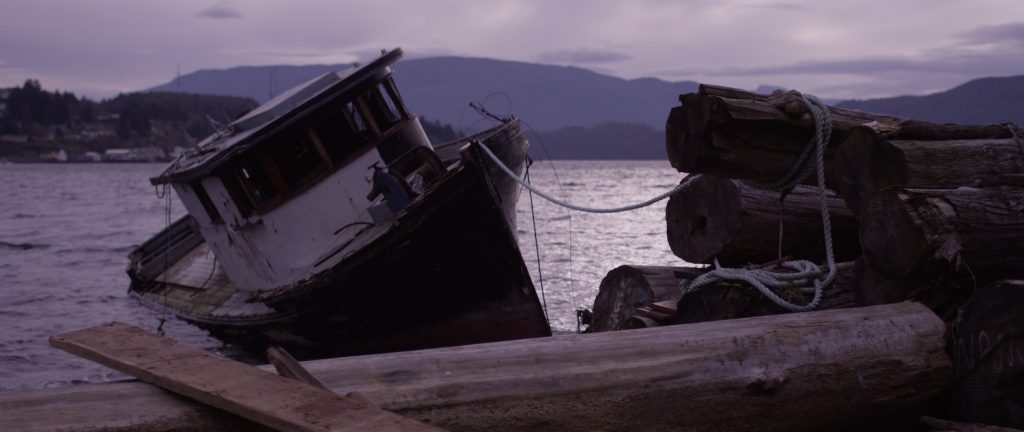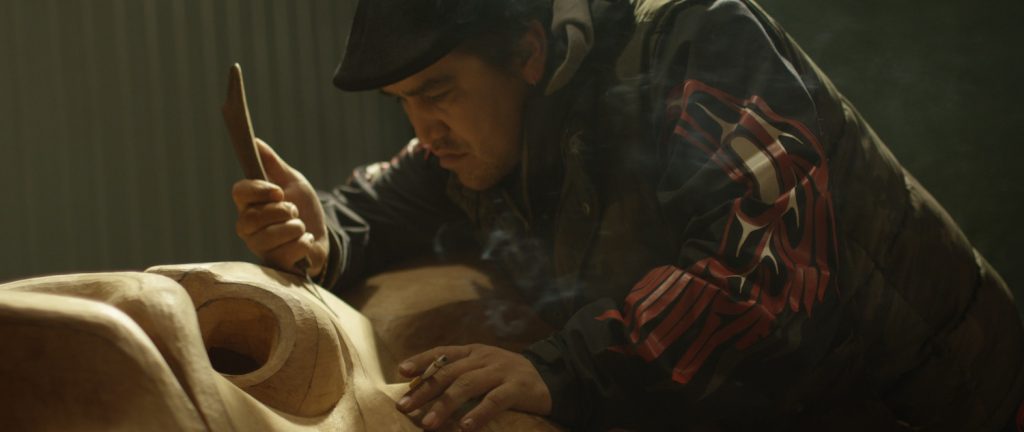Help us protect the commons. Make a tax deductible gift to fund our work. Donate today!
We featured Robin McKenna’s new film GIFT in a special session at the CC Global Summit. Inspired by The Gift, Lewis Hyde’s seminal work on creativity, culture, and art, McKenna’s film tells moving stories of remarkable generosity and sharing, from British Columbia, San Francisco, Melbourne, Auckland, and Rome. Her work has taken her around the world and into the lives and homes of artists and communities motivated by an intrinsic giving force outside of the market economy, in service of the spirit that moves all artists. In a 2014 interview with Shareable, McKenna says, “I started thinking more about interior gifts, the openness involved in the creative process, the role of chance and accident, the gifts that come to us when we’re ready to receive them. This kind of circulation of gifts has been central to my whole life, the choices I’ve made, and my creative path.”
A call to action to bolster the transformative power of gifting globally, McKenna’s film is a much needed meditation on the role of sharing in the world today.
Sign up for our newsletter to learn more about how we’re working for a more open and transparent world.
In what ways are you inspired by Lewis Hyde’s work? In what ways do you diverge? How do you balance the act of documentary filmmaking with the book’s creative ethnography, and how do you make Hyde’s words come to life for a documentary audience?
I think the book articulated something for me that I had kind of intuited for many years, but hadn’t totally understood until I read it. When I was around 18 I had experiences of, for example, reading William Blake for the first time, or the beat poets, and feeling my heart stop: having the realization “this could change your life.”
Art could transform you, spark something in you that changes you. Then that gift takes shape in you, in its own way, and maybe something else is created, out of that.
I guess the book became that for me – a gift that transformed, shape-changed, and took 5 years to become this film.
I told Lewis I wanted to “remix his book for the 21st century.” What’s interesting is the book was written before the Internet existed, the free software movement, the “sharing economy”, any of this. The book came out in 1983, and it talks about the rise of the market economy and its dominance over the culture we live in. In some ways, considering how much more extreme those influences have now become (now, in the age of Trump, in almost a surreal way, right?) some passages in the book sound almost quaint or naïve. Now we almost take for granted the kind of “market triumphalism” that dominates every aspect of our lives.
Balancing the book and film was challenging! We experience a film so differently than a book – as a medium, cinema tends to be more emotional and experiential. Hyde uses fairytales and folktales as parables to illustrate his ideas. What I decided to do was follow four character-driven stories in different places in the world – and to try to weave the ideas through their stories. This way, the film takes us inside an experience, and a character; my hope is that we have a chance to feel the ideas, as opposed to just having them explained to us in words.
In the book, Hyde writes, “The more we allow such commodity art to define and control our gifts, the less gifted we will become, as individuals and as a society. ” How do you interpret this quote? How do you work within the commodity economy as an independent artist? How do you work outside of it?
I spent some years working more in a TV context, as “director-for-hire”, and could feel a kind of conflict in myself: I knew there was something I needed to do that was more personal, more meaningful to me, that I wasn’t fully doing. And when I read The Gift, it spoke to that – how something is sparked in us, by our experience of art – and needs to come through us, somehow.
When I started making this film in 2013 I stopped working “for hire” almost completely, to just develop this and other personal projects. The Gift film is mostly financed, but not completely: so as producer/director, I’ve had to invest a lot of what I should have been paid to make it, to allow it to get made. So, I guess I’ve been facing the classic dilemma: devoting myself to something I love, not really making a living- basically going into debt.
I guess I haven’t totally solved that one: having to exist in a world where we have to pay rent, where it’s pretty hard to step outside that paradigm completely – although the inhabitants of the factory in Rome (and other people living in squats and occupations) do challenge that paradigm. But I will say that, since I stepped into the world of “the gift” and this film, almost 5 years ago, a circle of gifts and support has appeared. The number of friends who lent me their places, their couches, their support, love and encouragement, cooked meals for me, inspired me, kept me going… all in this kind of web of reciprocity. It’s something I wouldn’t have noticed or named in the same way before working on this project, and I don’t think I could have gotten this far without that support.

Film still from GIFT, courtesy of Intuitive Pictures
How did you choose your subjects for the documentary? How did you find them? What do they all have in common, and how do they differ? How do they relate to the theme of Gift economy?
Hyde talks about this in relation to the tradition of the indigenous tradition of the potlatch, on the Pacific Northwest Coast- where the person who gives the most is the most respected person in the culture. That was one of the first passages that really struck me- I had the thought: imagine if we all saw the world that way, how different the world could be?
Hyde focuses on the Kwakuitl, now call themselves Kwak’wakwala, I did a bit of research, reached out to the community in Alert Bay, BC, and they connected me with a young artist and carver, Marcus Alfred, who was 30 and planning his first potlatch- spending years saving money, so he could give it all away. I went to BC and met Marcus and his family, spent time in the workshop where the guys were carving- and found the potlatch really was at the centre of a whole system of values, a way of seeing the world. Still going strong in the 21st century. That kind of amazed me. I think that’s when I became convinced I could make this a character-driven film.
So some of the stories, like the potlatch, connect very directly to the book. The artist Lee Mingwei, whose work I read about and loved, many years ago: Buddhist-influenced, confounding the boundaries between art and life, creating trust between strangers. While making the film, I looked him up – and discovered, synchronistically, that his work is actually directly influenced by Hyde’s thinking.
I wanted a Burning Man story as well, if only because it’s such a visually surreal and fantastical world. When I interviewed Larry Harvey, one of the founders of Burning Man, he told me when they decided to proactively make the idea of “gift economy” one of the core principles of the event, it was actually inspired by having read Hyde’s book-! Which I didn’t know, and was fascinated to hear.
The last storyline I found, an abandoned factory in Rome illegally occupied by 200 migrants and precarious workers, protected by art and artists- is maybe the less obvious story, in connection to the book. But Hyde writes “There are many connections between anarchist theory and gift exchange as an economy.” It was a story about art, that also had some political edge to it- that spoke more directly to the state of the world right now.
The themes of circularity and storytelling are central to Lewis Hyde’s book. How do you draw on these themes, and how do you interpret them? How do they relate to your film?
In the film, as he prepares for the potlatch, Marcus says “The more you can give, the bigger a chief you are. To see how many people you’re able to bring to your potlatch: and if you’ve helped people along the way, then that part shouldn’t be a problem, because the circle just goes around and around. And if somebody starts to drop off, then it no longer remains a circle.” He’s talking about reciprocity, the circle of the gift, how what we’ve given comes back to us – not always the way we expected.
All the stories have an element of this circularity- and it becomes also metaphorical, speaking to our inner gifts. “What we’ve been given needs to be given away, not kept”. Hyde begins by talking about this in terms of actual gift exchange, but then it becomes about the creative gift- that comes to us in a way we can’t demand or buy, that’s bestowed, in the manner of a gift- and that, as creative people, we need to give away again, to share and express.
You could say each of these stories, and the experiences behind them, have been a gift, entrusted to me – now I need to release this film into the world, and share the stories again, so the gift can keep moving. ☺

Film still from GIFT, courtesy of Intuitive Pictures
Why are the commons important? How can the commons and gift culture provide an antidote to the prevailing currency of excess?
Many years after The Gift, Lewis Hyde wrote a book called Common As Air, exploring this idea of the cultural commons. Of course there’s a lot of overlap between the ideas, like the importance of protecting shared spaces outside the market economy. He writes,
The free market is surrounded by full and well-elaborated speech, but the commons is not. It is therefore hard for us to reckon the value of our common assets, and hard to know how best to protect them, keep them lively, and continue to engender them. It is hard to be good stewards of a wealth so few can see or seem to care about.
In the potlatch story in the film, Marcus’ father Wayne says, “Wealth is many many things – Not just money. Money burns the cheapest of all of them.” The Gift is about the value of something that can’t be measured or counted in numbers. Protecting our common assets, and shared wealth, including the planet we live on… I think it’s becoming more urgent to consider the importance of protecting this wealth, and these spaces, before they’re bulldozed completely.
Posted 29 June 2017